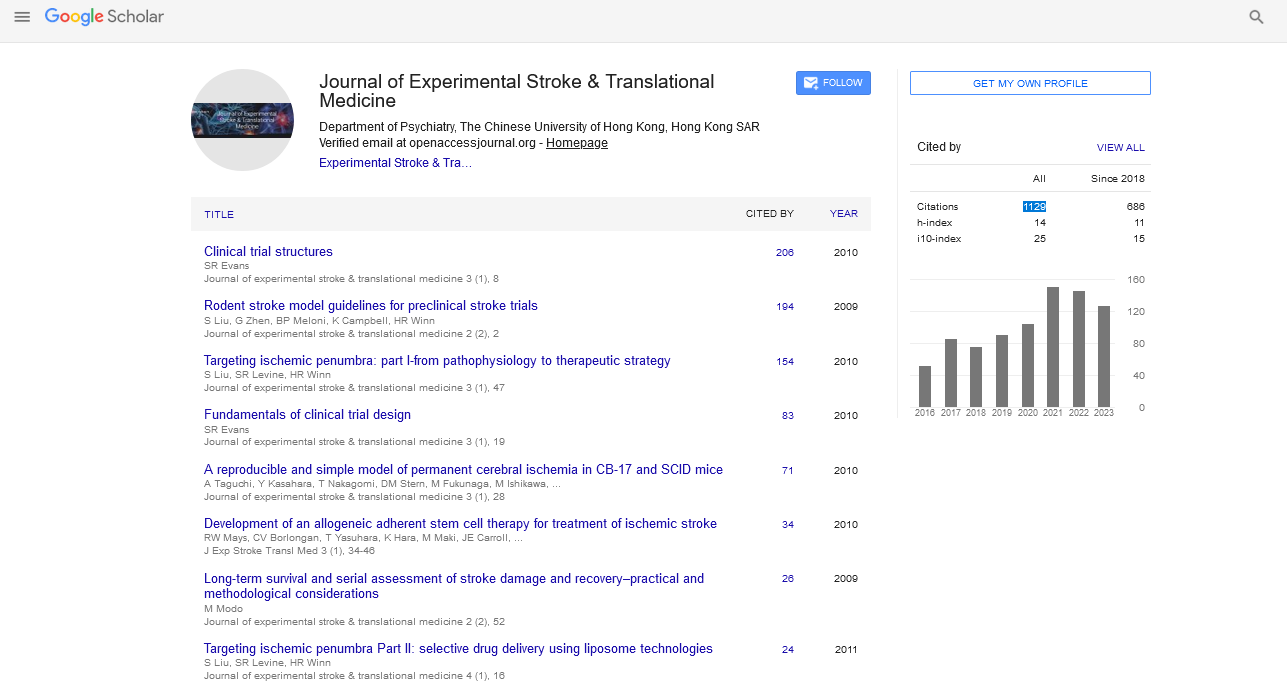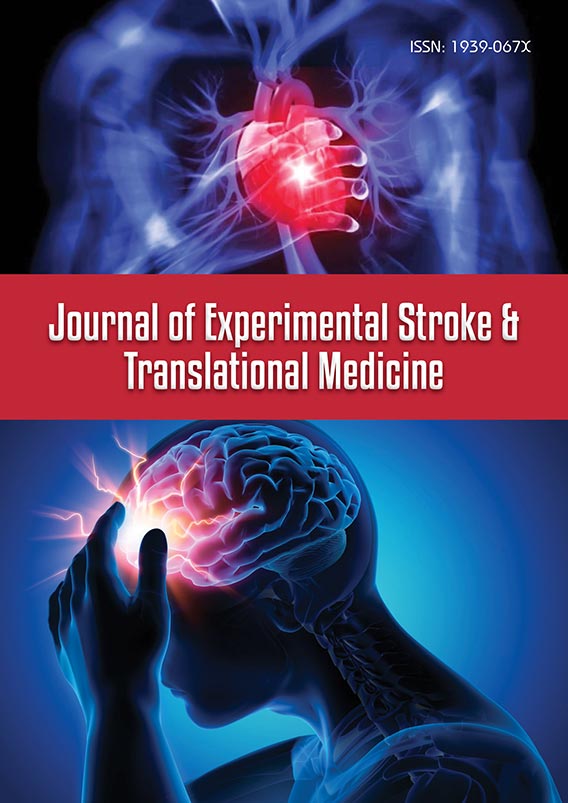Perspective - Journal of Experimental Stroke & Translational Medicine (2024) Volume 16, Issue 2
Beyond Stroke Units: Understanding Non-Stroke Unit Care and Its Role in Stroke Management
- Corresponding Author:
- Ahmed N M Shanem
Department of Cardiology,
St. Phillip University,
Bristol,
UK
E-mail: anmghanem24@gmail.com
Received: 06-Mar-2024, Manuscript No. jestm-24-128906; Editor assigned: 11-Mar-2024, PreQC No. jestm-24-128906 (PQ); Reviewed: 25-Mar-2024, QC No. jestm-24-128906; Revised: 10-Apr-2024, Manuscript No. jestm-24-128906 (R); Published: 17-Apr-2024, DOI: 10.37532/jestm.2024.16(2).177-178
Introduction
Stroke, a leading cause of disability and death globally, requires timely and specialized care to optimize outcomes and minimize long-term complications. While stroke units are recognized as the gold standard for acute stroke management, not all patients have access to these specialized facilities. Non-stroke unit care, provided in general medical wards or community settings, plays a crucial role in the continuum of stroke care, catering to the needs of patients who may not have immediate access to stroke units.
Description
Understanding non-stroke unit care
Non-stroke unit care refers to the provision of acute stroke care in general medical wards, emergency departments, or community hospitals that do not have specialized stroke units. While stroke units offer dedicated, multidisciplinary care tailored to the unique needs of stroke patients, not all healthcare facilities have the resources or expertise to establish and maintain these specialized units. As a result, many patients receive initial stroke care in non-stroke unit settings before being transferred to higher-level facilities for further evaluation and management.
Key components of non-stroke unit care
Although non-stroke unit care may lack the specialized resources and expertise available in dedicated stroke units, it still plays a vital role in the early management and stabilization of stroke patients. Key components of non-stroke unit care include.
Rapid assessment and triage: In non-stroke unit settings, timely assessment and triage are essential for identifying and prioritizing stroke patients for further evaluation and treatment. Emergency department staff, nurses and physicians must be trained to recognize the signs and symptoms of stroke and initiate appropriate interventions, such as intravenous thrombolysis or referral to specialized stroke centers.
Stabilization and monitoring: Once identified, stroke patients in non-stroke unit settings require prompt stabilization and monitoring to prevent complications and optimize outcomes. This may involve administering medications to control blood pressure, managing airway and breathing and neurological status and fluid balance.
Collaboration and communication: Effective collaboration and communication among healthcare providers are critical for coordinating care and ensuring seamless transitions between different levels of care. Nurses, physicians, therapists and other members of the healthcare team must work together to develop and implement individualized care plans, facilitate timely consultations and address the diverse needs of stroke patients and their families.
Rehabilitation and support services: While non-stroke unit settings may lack dedicated rehabilitation services, efforts should be made to provide early mobilization, therapy referrals and supportive care to facilitate recovery and prevent complications. Physical therapists, occupational therapists and speech-language pathologists can assess functional status, provide education and guidance.
Challenges of non-stroke unit care
Non-stroke unit care poses several challenges for the management of stroke patients, including.
Limited resources and expertise: Non-stroke unit settings may lack the specialized resources, equipment and expertise available in dedicated stroke units, leading to delays in diagnosis, treatment and rehabilitation. Healthcare providers may have limited experience or training in stroke care, resulting in variability in the quality of care and outcomes for patients.
Fragmented care pathways: Stroke patients managed in non-stroke unit settings may experience fragmented care pathways, with delays or gaps in communication, coordination and continuity of care between different healthcare providers and settings. This can lead to suboptimal management, missed opportunities for timely intervention and increased risk of complications and disability.
Access barriers: Patients living in rural or underserved areas may face barriers to accessing specialized stroke care, including long travel distances, limited transportation options and inadequate healthcare infrastructure. As a result, they may be more likely to receive initial stroke care in non-stroke unit settings, where resources and expertise may be limited.
Strategies for optimizing non-stroke unit care
Despite its challenges, non-stroke unit care plays a crucial role in the early management and stabilization of stroke patients, particularly in settings where specialized stroke units may not be available. Several strategies can help optimize non-stroke unit care and improve outcomes for stroke patients.
Training and education: Healthcare providers in non-stroke unit settings should receive training and education on the recognition, assessment and management of stroke. Continuing education programs, simulation training and clinical protocols can help standardize care practices and improve the knowledge and skills of frontline providers.
Telestroke services: Telestroke programs, which enable remote consultation and decision-making between stroke specialists and local providers, can help extend the reach of specialized stroke care to underserved areas. Telestroke consultations facilitate timely diagnosis, treatment and transfer of stroke patients, reducing treatment delays and improving outcomes.
Care pathway optimization: Streamlining care pathways and implementing standardized protocols for stroke assessment, triage and management can help reduce delays and improve the efficiency and effectiveness of care in nonstroke unit settings. Clear communication channels, multidisciplinary teamwork and regular quality improvement initiatives are essential for optimizing care delivery and enhancing patient outcomes.
Conclusion
Non-stroke unit care plays a vital role in the continuum of stroke care, providing essential services to patients who may not have immediate access to specialized stroke units. While non-stroke unit settings may pose challenges for stroke management, efforts to optimize care pathways, enhance provider training and expand access to telestroke services can help improve outcomes and reduce disparities in stroke care delivery. By embracing a multidisciplinary, patient-centered approach and fostering collaboration among healthcare providers, policymakers and community stakeholders.

